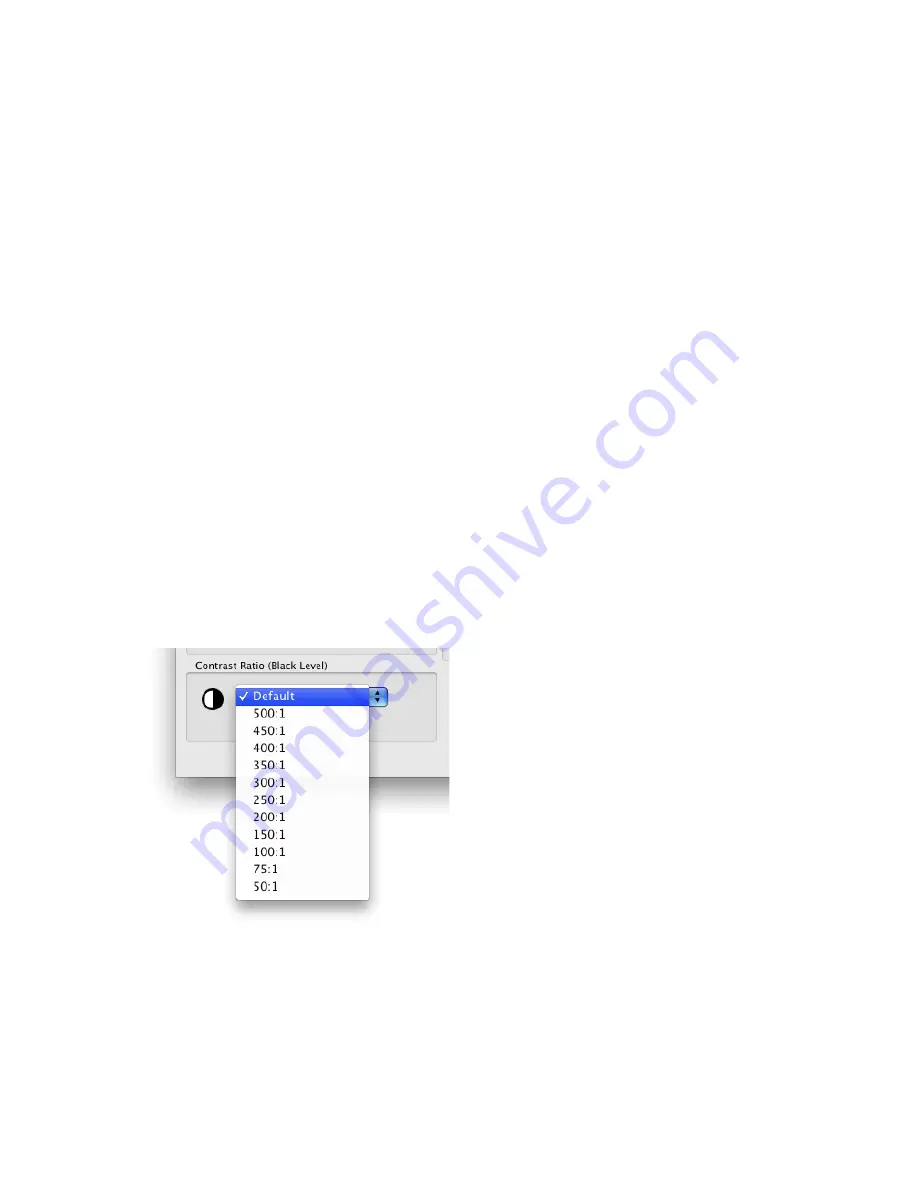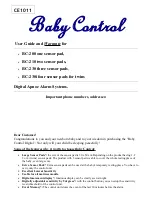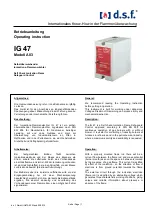
15
| SPECTRAVIEW II - USER’S GUIDE
Use Scale Factor
- The DICOM response curve shape is based on the measured black level and
Intensity. If the black level or Intensity of the display changes, then the shape of the DICOM response
curve also changes. If a display is not expected to be re-calibrated for a period of several months, this
feature can be used to increase the longevity of the DICOM calibration using the knowledge that the
displays brightness will decrease slightly as it ages. By scaling the black level and Intensity values
used to calculate the DICOM response curve, using the Use Scale Factor value, the response curve
can be based on the lower future black level and Intensity. The value used will depend on the display,
its usage, and the time interval until it is expected to next be re-calibrated.
Custom Curve
- Advanced and custom response curves can be selected from presets or created by
importing a table of values. Click the
Edit...
button to open the
Custom Gamma Curve
dialog.
Intensity
The
Intensity
selects the luminance or “brightness” of white for the calibration. Options are:
Maximum possible
- calibrates the display to the maximum possible luminance that it can achieve.
The actual value achieved will depend on the display’s type, its age and the white point used. This is
not recommended when trying to exactly match two or more displays, since there may be a difference
between what Intensity each display can achieve.
Specific Level
- calibrates the display’s Intensity to a specified target value. If the display can not
achieve the specified value, it will be calibrated to the closest possible Intensity, and a message will be
displayed after the calibration has completed.
Note: If you are unsure about what level to use for the Specific Level for a particular application, it is possible
to interactively adjust both the White Point and Intensity using the
Visual Match
feature in the
Custom White
Point
dialog.
Contrast Ratio
Contrast Ratio
allows a particular contrast ratio to be used if necessary. The contrast ratio is the ratio of white
to black luminance.
Selecting
Monitor Default
will calibrate the display to the
highest possible contrast ratio, which is limited by the display
technology, the selected White Point, Intensity value, and
other factors.
In some applications, such as simulating low contrast images
such as in newsprint, it is useful to have a lower contrast ratio
than the display’s native value. Contrast Ratios in the range
of 50:1 to 500:1 can be selected.
Note: If the selected contrast ratio is higher than what the
display is actually capable of achieving, then the display will
calibrate to the highest possible contrast ratio. If a specific
Contrast Ratio
is selected, it is recommended that the
number of
Calibration and Measurement Steps
be set to at
least 32 in the
Preferences
dialog.
•
•
•
Содержание LCD2490W2-BK-SV - MultiSync - 24" LCD Monitor
Страница 1: ...Version 1 1 04 User s Guide ...
















































